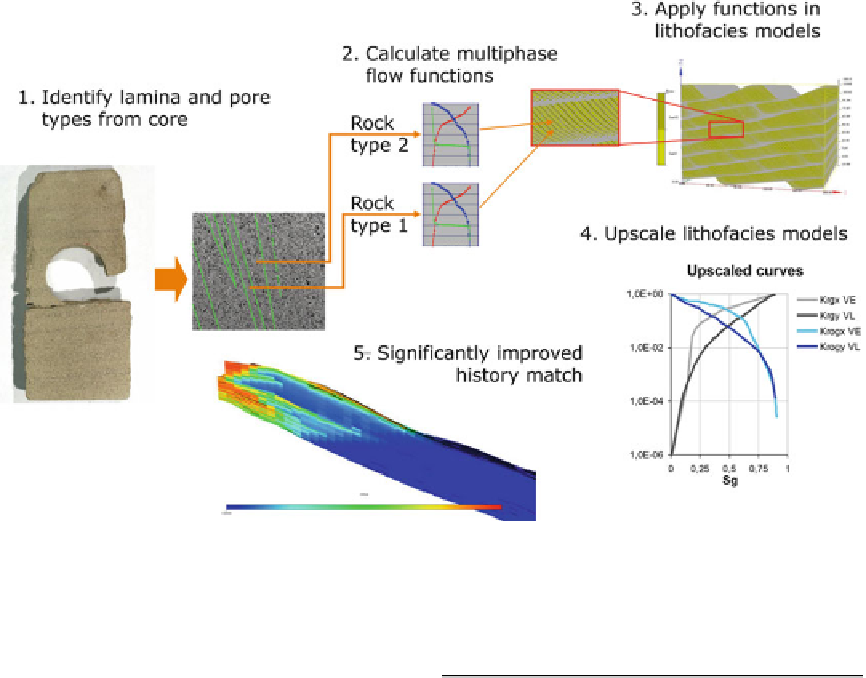Geoscience Reference
In-Depth Information
Fig. 4.32
Pore to lithofacies modelling workflow (Photos K. Nordahl & A. Rustad/Statoil
#
Statoil ASA, reproduced
with permission)
2. Are your rock properties estimated at
the
References
REV?
•
Hint:
Try to relate your model length
scales (grid sizes) to the natural rock archi-
tecture length scales using the multi-scale
REV sketch.
3. What length scale has the largest influence on
the flow process?
•
Hint:
Some flow processes ignore small-
scale variations while other flow processes
may be are strongly controlled by them.
4. Are your flow forecasts based on single-phase
or multi-phase flow equations using
represen-
tative
rock properties and
appropriate
fluid
properties.
•
Hint:
What really controls your flow pro-
cess - k
effective
,k
fracture
,k
relative
,k
v
or P
c
.
Are you reasonably happy with your
assumptions? Press 'execute' on the simulator
and review the outcomes.
Abbaszadeh M, Fujii H, Fujimoto F (1996) Permeability
prediction by hydraulic flow units - theory and
applications. SPE Form Eval 11(4):263-271
Bakke S, Øren P-E (1997) 3-D pore-scale modelling of
sandstones and flow simulations in pore networks.
SPE J 2:136-149
Barker JW, Thibeau S (1997) A critical review of the use
of pseudo relative permeabilities for upscaling. SPE
Reserv Eng 12(5):138-143
Bear J (1972) Dynamics of fluids in porous media.
Elsevier, New York
Behbahani H, Blunt MJ (2005) Analysis of imbibition in
mixed-wet rocks using pore-scale modeling. SPE J
10(4):466-474
Blunt MJ (1997) Effects of heterogeneity and wetting on
relative permeability using pore level modeling. SPE J
2(1):70-87
Bourbiaux B, Basquet R, Cacas M-C, Daniel J-M, Sarda S
(2002) An integrated workflow to account for multi-
scale fractures in reservoir simulation models: imple-
mentation and benefits. SPE paper 78489 presented at
Abu Dhabi
international petroleum exhibition and


